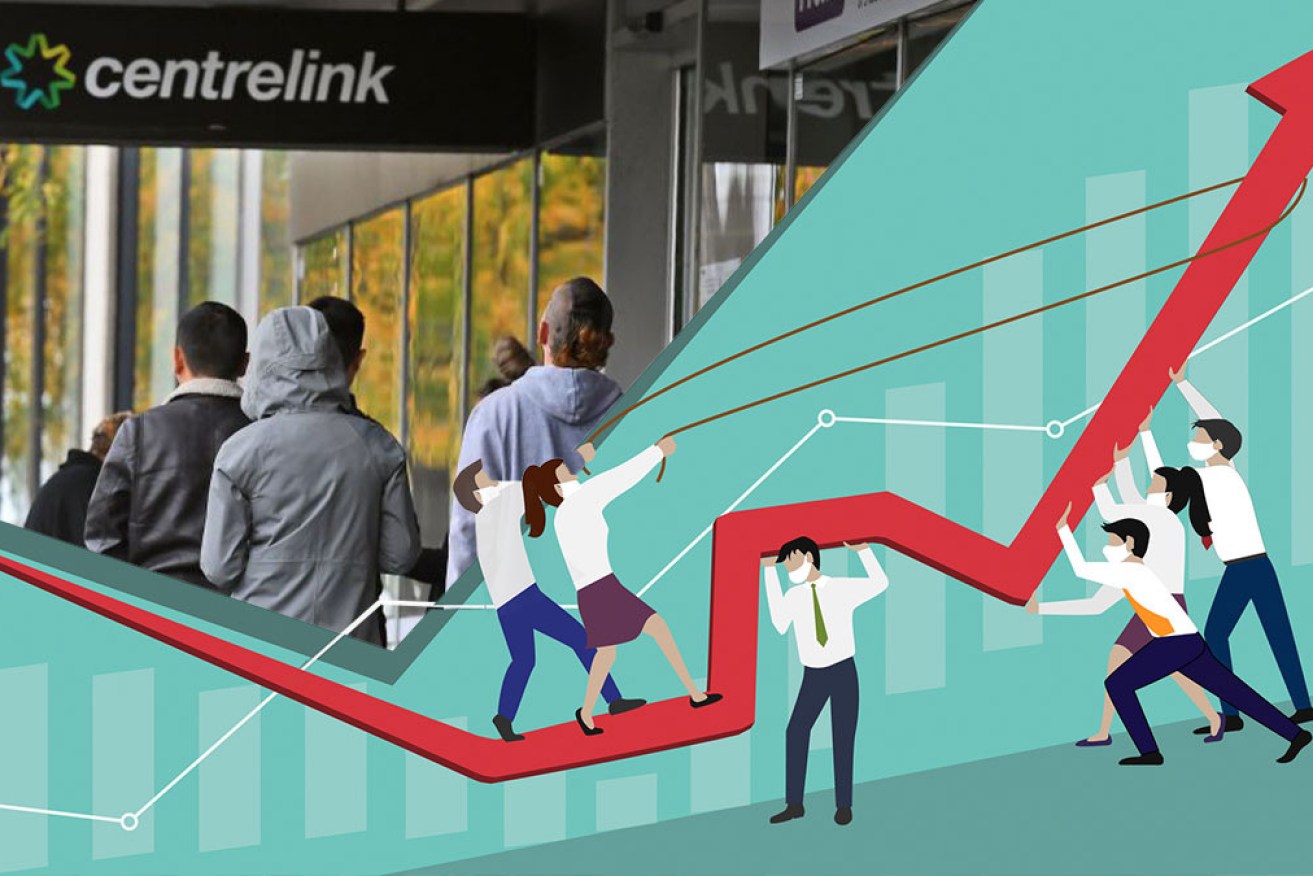Economic optimism running high as Australians get back to work


Economists have confidence in our recovery from COVID-19. Photo: TND
Many Australians are sitting on a pile of cash, property prices are rising, and nine out of 10 jobs lost at the height of the pandemic have now returned to the workforce.
The economic landscape for 2021 is positive and economists are confident that, in the absence of more widespread lockdowns, Australia will be a star performer among OECD countries.
Households and businesses squirrelled away more than $200 billion in savings between January and November last year, according to figures from financial regulator APRA.
Commonwealth Bank head of Australian economics Gareth Aird said despite having been through a recession, household income was higher than before the pandemic as a result of federal government stimulus.
“The household sector as a collective has actually experienced a positive shock to income over the COVID period, which is still going on right now,” he said.
Mr Aird said wages, salaries and government payments going into Commonwealth Bank accounts are running well above pre-COVID levels.
He said lending data was also strong for home renovations and construction, adding that rising property prices and low interest rates also painted a positive economic picture.
“Households feel good, there is lots of income there, and they’re sitting on a huge pile of savings,” Mr Aird said.
“All of that bodes really well for the economy.”
Mr Aird said Australia’s economic outlook was favourable compared to other countries in the OECD, with the Commonwealth Bank tipping GDP will jump by 4.2 per cent this year.
“People by and large here do not need to worry about catching COVID, whereas overseas, in so many countries, it’s rife and most people would be concerned about doing things, even if there are no restrictions, for fear of catching COVID,” he said.
“Provided you get some clear air from COVID … provided we don’t have ongoing lockdowns, I think the outlook is quite favourable.”
Australia is due to begin its COVID-19 vaccine rollout in mid-to-late February, starting with 680,000 people, including frontline health workers and aged care and disability staff and residents.
Federal Health Minister Greg Hunt has said the rollout is expected to be completed by October.
By the time we get to the second half of next year, COVID shouldn’t be an issue for the domestic economy anyway,” Mr Aird said.
But not everyone is upbeat about the year ahead, with some sectors worried about what happens when JobKeeper ends on March 28.
Restaurant and Catering Australia chief executive Wes Lambert wants taxpayer-funded wage help extended for six months beyond March, for businesses hit by lockdowns and border restrictions.
The tourism industry is also lobbying to have JobKeeper extended, with Tourism and Transport Forum (TTF) chief executive Margy Osmond arguing domestic tourism cannot fill the void left by international visitors.
TTF research forecasts up to 320,000 tourism jobs could disappear by September this year if JobKeeper ends as planned.
But Federal Treasurer Josh Frydenberg has rejected the idea of extending the stimulus measure.
He said Australian households and businesses have lots of cash to spend and invest, enough to power the economy after JobKeeper ends.
“This is a huge sum of money available to be spent across the economy, helping to create jobs and maintain the momentum of our economic recovery,” he said in a statement this month.
Shadow treasurer Jim Chalmers has nonetheless urged the government to continue helping businesses affected by border closures, telling reporters in Cairns this week that local businesses have been decimated by the lack of overseas visitors and that JobKeeper was helping them survive.
“It shouldn’t be beyond the government to devise some kind of test which sees JobKeeper continue, where businesses which genuinely need it receive it,” he said.
AMP chief economist Shane Oliver, however, believes the potential impact of JobKeeper’s withdrawal has been overstated.
Dr Oliver said JobKeeper protected 2.1 million fewer jobs last October than the previous month, as fewer businesses were struggling enough to pass the turnover test.
At the same time, unemployment continues to fall, with the seasonally adjusted jobless rate dipping to 6.6 per cent in December, 0.2 percentage points lower than the previous month.
“In Australia, there seems to be renewed concern about JobKeeper ending at the end of March,” Dr Oliver said.
“At this stage I don’t see it as being a major problem so long as the economy continues to recover.”
Dr Oliver said since the loosening of restrictions in Victoria, there was likely to be fewer than one million jobs needing protection, with this likely to fall further by March.
“The key to all of this is whether the economy continues to recover,” he said.
“So far it has recovered faster than expected despite the long Victorian lockdown and the latest coronavirus scare in the eastern states does not appear to have caused a major setback.
“If this remains the case, then the recovery is likely to continue and it will be appropriate to end JobKeeper as planned at the end of March.”












